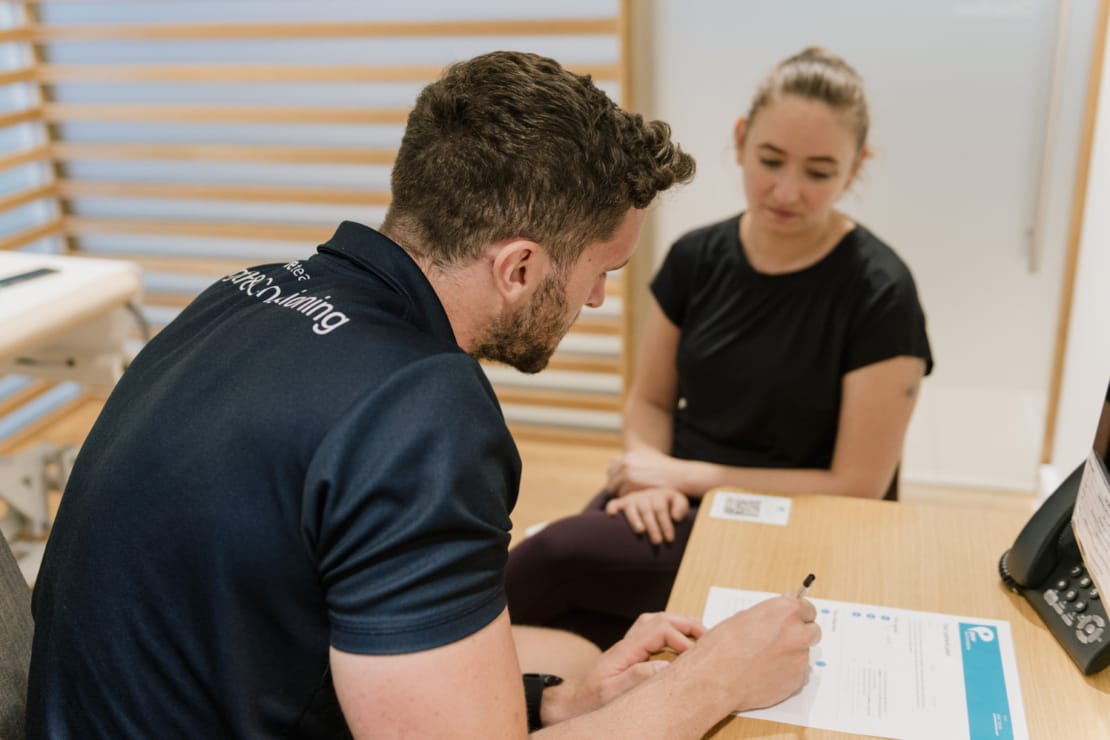Neck pain: Treatment, Causes and Prevention

Pure Sports Medicine
- 14 January, 2019
- Physiotherapy
- Pain Management
- 5 min read
Neck pain is one of the most common conditions seen by the clinical team at Pure Sports Medicine and is experienced by many people at some point in their lives.

It can be caused by something as simple as sleeping badly at night, long hours hunched over a computer or possibly an incident such as a car accident or sporting injury. In many cases, the pain may settle without treatment, but when it is long-lasting or particularly painful, seeing a clinician can be a huge help.
Content
- What types of neck pain are there?
- What causes neck pain?
- How to treat neck pain
- Types of treatment for neck pain
- Do I need an MRI, X-ray or scan for my neck pain?
- Prevention of neck pain / what you can do at home or at work
What types of neck pain are there?
- Mechanical – caused by problems with the way the joints and muscles of the neck are moving
- Structural – caused by irritation or injury to the joints, discs, muscles and / nerves of the neck region
- Muscular/myofascial/tonal
- Sensitisation – increased sensitivity of the neck structures meaning they have a heightened pain response
- Referred – like a toothache, neck pain can be referred from other structures in the body.
Sometimes neck pain may be classified as “non-specific” which means it cannot be attributed to coming from a specific structure. This is normally seen, or rather not see, from scanning. It may look as though your bone scan is perfectly normal, but it does not mean that there’s nothing wrong with you. You are most definitely experiencing pain. But it’s not due to a structure which we can see on the imaging performed.
Keep in mind that MRI’s, X-rays and CT scans are static images that don’t show how your body moves or your working/daily postures. Scans therefore cannot identify if muscles are weak or lack endurance, if joints are stiff or hypermobile or if tissues are tight or sensitised. This requires a physical examination in which a clinician will examine your movement patterns, feel your joints and muscles and determine what structures may be under abnormal stress or strain and therefore causing pain.
What Causes Neck Pain?
Neck pain causes can fall into two categories traumatic vs non-traumatic, which is easy to identify as there is a clear injury/trauma vs not.
How To Treat Neck Pain
The most important thing to understand about treating neck pain is that alleviating the pain symptoms is unlikely to result in long term relief. It is essential to address the “contributing factors” if we are to successfully improve neck pain long term. This requires work on a number of factors including:
- Joint stiffness
- Muscle or soft tissue tightness
- Poor working positions or postures
- Poor control of the neck
- A lack of muscle strength or endurance
- Stress
When there are multiple factors contributing to the overall symptoms, time is often needed to address all components fully.
Types of Treatment For Neck Pain
- Manual therapy
- Manipulation
- Soft tissue therapy (massage) / myofascial release
- Exercise prescription to improve
- Range of movement
- Tissue tightness
- Postural and positional awareness of head and neck
- Neck muscle strength and/or endurance
- Shoulder and core muscle strength and/or endurance
- Desensitising structures
Together with your clinician, you will decide the order that treatment is implemented to help relieve your neck pain. Some of these are more short-term, such as massage, whilst others are a longer term such as addresses your lifestyle and making beneficial changes. If you are a long-term sufferer of neck pain, or it reoccurs often for you it is these longer-term treatments and changes that are likely to be used to see lasting results.
Reoccurring neck pain is often a result of treating the symptoms and not the cause of the problem. Manual therapy and soft tissue therapy are extremely effective at reducing neck pain but their effects are generally short term. For these effects to be sustained, an individualised exercise programme, together with education and advice about posture, movement and lifestyle changes are essential. This can make dealing with persistent neck pain a real challenge for people, as it often requires time and persistence, as well as consideration of work and life demands. We tend to prioritise these over our own wellbeing, often to the detriment of our health.
Do I Need an MRI, X-Ray or Scan For My Neck Pain?
The questions I get asked the most by patients are whether there is anything wrong with their neck, or have they damaged anything?
What’s important to bear in mind is that a scan does not necessarily provide the answers. Neck pain can occur in the presence of no structural change or damage in the neck, but the opposite is also true; we can see structural changes on a scan but the person has no pain or symptoms.
A scan should only ever be undertaken in conjunction with a detailed clinical examination including a thorough history and physical examination.
Certain elements of the examination may direct the clinician to recommend or arrange imaging (MRI, X-ray etc) but it’s not always necessary as a first step, unless there are key signs and symptoms. In these cases, the clinician would usually be concerned about some sort of serious pathology that may require specific intervention. Most cases of neck pain can be resolved using a treatment plan based on the clinical examination, but if the pain does not respond as expected, X-rays or a scan may be ordered to clarify the diagnosis.
Prevention of Neck Pain / What You Can Do at Home or at Work
We know that exercise can improve neck pain – the research and expert opinion is very clear. To help people understand why exercise is an essential component of your treatment plan, your clinician should ensure they discuss:
- Why you have neck pain
- The aims of the exercises you have been prescribed and how long an improvement should take
- How to do the exercises properly (good coaching)
- What the risk factors are for the return of your neck pain
- How you can be proactive in your recovery and preventing a recurrence
Long periods sitting at a desk is one of the most common provocative factors for neck pain in many of the people we see at Pure Sports Medicine. If you do sit for long periods during the week, simple things can help to reduce to the onset of neck pain
- Use 60secs of your time to do neck exercises 4 times a day (4mins total) is, for some, still difficult
OR
- Short periods (less than 10secs) of turning, side flexing and getting out of the classic “slouch” position performed very frequently (every 20-30mins)
Ongoing research into neck pain has demonstrated that pain is not simply the result of damage or “wear and tear” in the neck, or just caused by “poor posture”. Effective treatment requires many different things to be addressed including neck mobility and strength, muscle endurance, work habits and lifestyle factors such as sleep, stress and exercise. It is essential that all these components are examined and considered by your clinician in helping you address the causes of your neck pain.
If you are suffering from neck pain book an appointment with a physiotherapist below.

Advice
Over the last 20+ years our experts have helped more than 100,000 patients, but we don’t stop there. We also like to share our knowledge and insight to help people lead healthier lives, and here you will find our extensive library of advice on a variety of topics to help you do the same.
OUR ADVICE HUBS See all Advice Hubs

